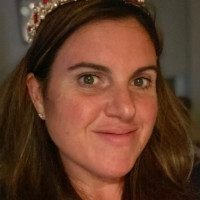As the tradition goes every February, a small furry animal has told us when we can expect spring’s rebirth. While recent warmer days and emerging greenery have ignited thoughts of spring and rebirth, the groundhog, a.k.a. Punxsutawney Phil, has indicated that winter isn’t entirely done with us yet.
During the long winter nights ahead, we can face challenges specific to our mental health, such as loneliness and depression. These feelings are especially poignant following a holiday such as Valentine’s day, especially for those of us feeling left out or whose expectations for the holiday weren’t met.
Loneliness is loosely defined as the discrepancy between the desired and perceived quality of relationships (Cheeta et al., 2021). In 1980, Russell et al. created a measurement they called the UCLA Loneliness Scale. The test comprises a series of statements with which respondents indicate how closely they identify. Statements such as “I do not feel alone,” “There are people I can turn to,” and “I feel isolated from others” (Russell et al., 1980). Research has also found that loneliness can increase other aspects of life, such as a tendency toward addiction (Kim et al., 2017). Loneliness-related adverse health outcomes include high blood pressure, cardiovascular disease, disability, cognitive decline, and depression (Gerst-Emerson et al., 2015).
Depression, on the other hand, is a mood disorder that causes persistent sadness and loss of interest (Mayo Clinic, 2023). Symptoms of depression include “feelings of sadness, tearfulness, emptiness or hopelessness, angry outbursts, irritability, or frustration, even over small matters, loss of interest or pleasure in most or all normal activities, such as sex, hobbies or sports, sleep disturbances, and tiredness,” (Mayo Clinic, 2023).
Common during winter periods, loneliness and depression are often co-occurring. Loneliness is often referred to as a transient feeling that can increase depression. Many aspects of our daily lives can contribute to or ease these feelings. For instance, researchers Tian et al. (2018) investigated the association between loneliness and depression and online activities. They found that activities like posting on a social networking site support group added to life satisfaction and reduced feelings of loneliness and depression (Tian et al., 2018). Conversely, extensive online gaming can increase loneliness and depression (Tian et al., 2018).
Although we all have days where we’d rather not interact, research shows that we are primarily social animals who crave interaction to such a degree that it can improve our health if we can achieve it. So what are some simple ways to lose that loneliness feeling?
- Get a pet: It seems simple, but those furry (or scaly) characters can bring much cheer to your life.
- Volunteer: Consider visiting a retirement home or see if your local library needs help.
- Reach out: Call that friend you’ve been putting off. Now’s the time!
- Join a club: Reach out to your local community center to see what they have scheduled.
- Wisely surf the Web: Choose support or interest groups with posting guidelines that protect posters.
When you need someone to talk to, we can help. Reach out to one of our licensed counselors to help with feelings of loneliness, anxiety, depression, and more. Contact us here.
References
Cheeta, S., Beevers, J., Chambers, S., Szameitat, A., & Chandler, C. (2021). Seeing sadness: Comorbid effects of loneliness and depression on emotional face processing. Brain and Behavior, 11(7)https://doi.org/10.1002/brb3.2189
Gerst-Emerson, K., & Jayawardhana, J. (2015). Loneliness as a Public Health Issue: The Impact of Loneliness on Health Care Utilization Among Older Adults. American Journal of Public Health, 105(5), 1013-1019. http://library.capella.edu/login?qurl=https%3A%2F%2Fwww.proquest.com%2Fscholarly-journals%2Floneliness-as-public-health-issue-impact-on-care%2Fdocview%2F1674426659%2Fse-2
Kim, E., Cho, I., & Kim, E. J. (2017). Structural Equation Model of Smartphone Addiction Based on Adult Attachment Theory: Mediating Effects of Loneliness and Depression. Asian Nursing Research, 11(2), 92-97. https://doi.org/10.1016/j.anr.2017.05.002
Mayo Clinic. (2023) Depression (major depressive disorder). https://www.mayoclinic.org/diseases-conditions/depression/symptoms-causes/syc-20356007
Russell, D., Peplau, L.A., & Cutrona, C.E. (1980). The revised UCLA Loneliness Scale: Concurrent and discriminant validity evidence. Journal of Personality and Social Psychology, 39, 472-480.Tian, Y., Zhang, S., Wu, R., Wang, P., Gao, F., & Chen, Y. (2018). Association Between Specific Internet Activities and Life Satisfaction: The Mediating Effects of Loneliness and Depression. Frontiers in Psychology, 9. https://doi.org/10.3389/fpsyg.2018.01181





